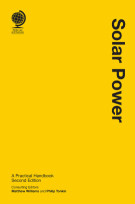Is gas to power a viable and attractive commercial proposition for the future?
31 May 2017

Partner King & Spalding
In our latest blog, Richard Nelson, partner at King & Spalding, discusses the challenges and costs of developing the integrated projects for gas-to-power.
In the recent past, we have witnessed a coincidence of (i) competitive global prices for natural gas, (ii) liberalisation and deregulation of domestic gas markets, (iii) political impetus to re-balance the global fuel mix towards sustainable energy (including natural gas), and (iv) plentiful global supplies of LNG. These factors have combined to make ‘Gas-to-Power’ a viable and attractive commercial proposition.
“Gas-to-Power” is a phrase that encompasses a trend of projects which involve using gas directly in power generation. The phrase “gas-to-power” covers both the supply of indigenous gas via pipeline to a power station, and (more typically) “LNG-to-power” where imported LNG is regasified for power generation. Typically “gas-to-power” refers to greenfield projects where there is no existing infrastructure, although it also encompasses brownfield projects where new sources of gas supply (usually LNG) are procured for supply to existing power plants.
A number of integrated Gas or LNG to Power projects are coming to market in South and South East Asia, Africa, Central and South America. The key feature of these projects is the use of LNG (sometimes alongside pipeline natural gas) as a feedstock supply source to new, greenfield power generation facilities. Many of these projects are developed on a ‘bundled’ basis, meaning that the developer is required to take responsibility for fuel (LNG/Gas) procurement, regasification and power generation, as well as interconnecting infrastructure such as pipelines and processing plants. The ultimate purchaser of electricity, which is most cases is a state or state-owned utility, seeks to pay a single tariff covering (in theory) the costs of developing the integrated project.
Notable challenges for these projects include:
- Financing: ensuring that project lenders are comfortable with (for example) the project-on-project risks inherent in these structures, alignment of equity interests, creditworthiness of the ultimate offtaker(s), availability, or in some cases, non-availability of host government support, currency indexation and foreign exchange exposure. To date very few of these projects have reached financial close due to some or all of these issues. Involvement of ECA and/or multilateral funding institutions is likely to be critical to the overall bankability of the project.
- Regasification: the selection and deployment of the regasification facility, which in most cases would be offshore (either a floating storage and regasification unit (FSRU) or a floating regasification unit (FSU)). The FSRU/FSU vessel will need to be designed around the specific technical and operational requirements of the power facility, which in turn will depend on how that facility will be used and dispatched. The day-to-day operational and gas usage requirements may therefore fluctuate significantly. LNG inventory management will be critical in order to ensure that the vessel caters to the dispatch nominations of the power plant between LNG cargo deliveries.
- Domestic gas: this is increasingly a sensitive political issue in emerging economies. How will the project reconcile the requirement to accommodate, or to transition towards, domestic sourced gas supply (sometimes referred to as ‘future proofing’) with project lenders’ requirement for certainty of fuel supply volumes and costs during the life of the project?
- Operational: important considerations will include: determination of baseload LNG supply volumes on a daily / monthly / yearly basis; co-ordination of scheduled maintenance across the LNG facilities, the FSRU/FSU vessel, interconnecting pipelines and the power generation plant; volume flexibility under the long-term LNG Sale and Purchase Agreements to accommodate fluctuations in generation dispatch and to mitigate LNG take-or-pay risk.
- Political: many of the projects that King & Spalding is seeing and is involved in are ‘first in country’, which depend to a large extent on the host government’s commitment. This may take the form of a government guarantee behind the offtaker’s payment obligations, although in many jurisdictions governments are reluctant or unable to provide this form of guarantee. The host government would ideally provide a favourable investment regime (across LNG supply, regasification and power generation) in terms of (for example) import taxes, customs duties and local content requirements. It would also (ideally) run a fair, transparent, consistent tender process (which is not always the case).
Integrated gas-to-power project involve multiple components, and typically multiple players. These distinct components must work seamlessly together, and distinct risk mitigation strategies must be put in place for each project component in order for the various project participants to sanction the project.













Any comments - send us an email